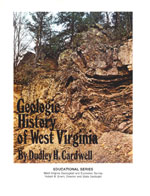Bakker studied paleontology under the renowned paleontologist John Ostrom at Yale University and later earned a Ph.D. from Harvard. Since then, Bakker has taught and conducted research a Johns Hopkins University, as well as the universities of Colorado and Wyoming. He has earned a reputation as a one of dinosaurology's loudest spokesmen—a paleo preacher always looking for converts to the exciting world of prehistoric life.
At Yale, Ostrom, with student Bakker at his side, first proffered the theory that dinosaurs were not cold-blooded brutes, but warm-blooded, highly adapted, highly intelligent, and highly social creatures. At first, the critics were highly skeptical. But, Ostrom supported his claims with evidence, and the skeptics soon fell into line.
A New Vision of Dinosaurs
If Ostrom was the Darwin of the warm blooded dinosaur theory, Bakker was his Huxley. His 1986 "Dinosaur Heresies" bulldogged to the general public the idea that was already changing the science of dinosaur paleontology. Across the country, museums were dismounting decades-old dinosaur skeletons and building new exhibits that showed the ancient bones in a new light. Now, once lumbering, tail dragging behemoths were running, their tails held parallel to the ground as they raced through museum halls.
Bakker is consumed with understanding dinosaur behavior—the bad and the good. He's fond of commenting on the visceral aspects of prehistoric life. I heard Dr. Bob speak at a lecture in 2001. Kids and adults alike got a kick out of his discussion of prehistoric farts and poisonous snot. Bakker wants to enter the world of the dinosaur, not just study the creatures as an inanimate museum specimens. He wants to make dinosaurs real, to mentally visit the Jurassic, and he seeks to take his audience along for the journey.
“I want to be the Bob DeNiro of the Jurassic,” he once remarked. “You know DeNiro is a method actor. When he's going to play the part of a bus driver he wants to feel like a bus driver. If I am studying Camptosaurus I want to feel like Camptosaurus. Which has required 20 years of work. I can kind of feel like Camptosaurus, sniff the ground and think, ‘It's too wet here. Too swampy I don't want to go there. Oh dry forest! I want to go there.’ ”
To truly understand dinosaur lives, you have to understand their habitats, the world in which they lived. He points out that museum exhibits of bare skeletons make about as much sense as zoo exhibits that put jungle cats in concrete and steel cages. Neither provides much insight into the contemporary world of these animals.
A Charismatic Approach
Bakker was the first to suggest dinosaurs had feathers, a point spectacularly proved just in the last decade by wonderfully preserved fossils from China. Bakker's heresies have converted the masses. Today, only a handful of orthodox scientists resist the evidence for the dinosaurian ancestry of birds.
Historically, great thinkers do not see their radical views accepted within their time; Bakker's theories on dinosaur metabolism and bird evolution have already become de facto standards. Despite the success of his forward-thinking ideas, he continues to challenge traditional thought on dinosaur life. His challenges coupled with his charismatic delivery have won him many detractors. Probably because of his success at promoting himself and his theories, Bakker is a target. A boisterous, popular—and often right-on-the-mark—target.
Bakker sees little conflict between religion and science. A Pentecostal preacher, he says scientists and creationists alike would do well to read Augustine, the fifth century scholar and source of much of the Christian tradition and belief. In addition to studying textual revelation, Augustine sought to interpret the scriptures in light of natural revelation. “And after reading Genesis and thinking about it he came up with the conclusion that the story in Genesis 1 and Genesis 2 was not a simple historical sequence of events. It just couldn't be. It's not what the words meant. It just wasn't.”
Today, Bakker leads guided fossil digs in his home state of Wyoming. He often lectures to small groups of children and adults, infecting others with a passion for prehistoric life through his spirited discussions and impromptu illustrations.
Robert T. Bakker
Born: 1945
Specialization: Dinosaurs
Education: Yale University. Ph.D. in Paleontology from Harvard University.
Books: Dinosaur Heresies, Raptor Red, Maximum Triceratops, Raptor Pack
Notable Quote:
“I want to find a voracious, small-minded predator and name it after the IRS.”








